
7 Best Swim Snorkels for Better Technique and Faster Swimming
Ready to throw down on a new swimmer’s snorkel? Here are reviews of the best swim snorkels for lap swimming.
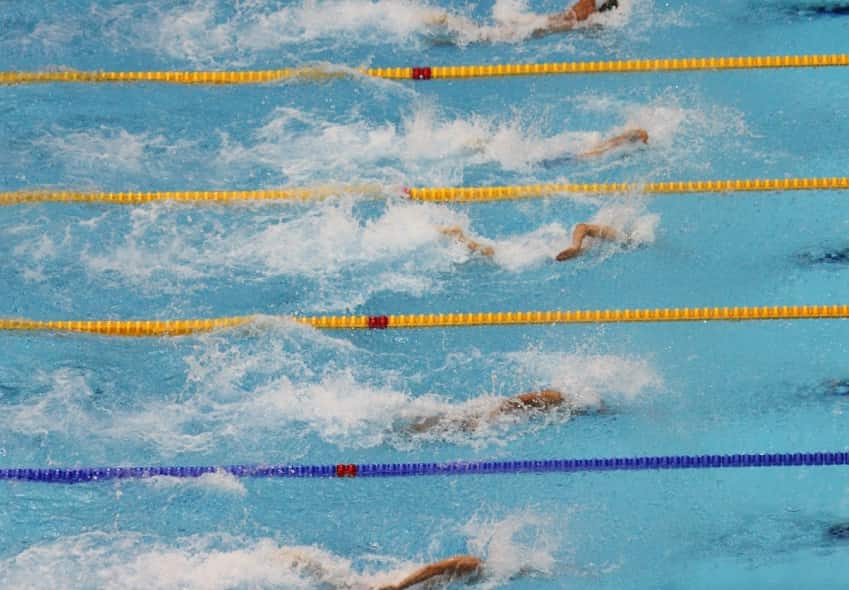
Looking to strengthen up your stroke? Develop a more powerful catch? Here’s why the VASA trainer should be added to your training arsenal.
Almost daily I get emails from swimmers, coaches and parents asking about dryland.
Should they lift more weights? Run more? What kind of exercises will help them kick faster? Pull harder? Be better-looking?
While I can’t attest to the last one, when it comes to pulling harder and faster there is a familiar tool (to competitive swimmers, at least) that does just that.
The VASA Trainer.
Here’s a breakdown and review of the VASA trainer, what you get out of training with one, the difference between the two swim benches VASA produces, who else is training with one, and where to invest in one.
Lessgo.
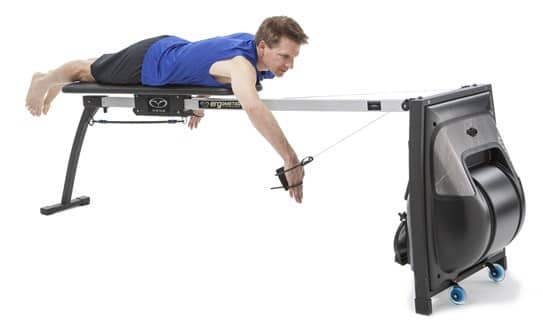
The VASA Trainer (and it’s partner-in-crime the VASA Swim Erg) are dryland training and power-building devices for swimmers. They are simple in design and simple in functionality.
You lay down on a bench, grab a couple handles, and pull against the resistance of gravity or a flywheel. By doing so, we strengthen our pulling motion, increasing the amount of strength we have in the water.
Stronger pull = faster swimming.
There are a lot of reasons to train with one of these. While it shouldn’t replace actual time spent in the water, a VASA Trainer can seriously compliment the work you are already doing.
Here’s just a few of my favorite reasons for using one:
Works the high elbow catch. A majority of the power comes from that first part of your pulling motion—the vaunted high elbow catch. The higher your elbow, and the stronger your shoulder and arm while in that position, the faster you are going to go. It’s about as simple as that. The first thing you will notice when you get on one of these is that the VASA trainer forces you to get into that position.
It’s sport-specific. Instead of spending hours and hours in the gym building bulk and muscle mass that doesn’t always transfer to the pool, the VASA trainer targets the same muscles and range of motion that swimmers use in the pool. In terms of swim-specific dryland, it doesn’t get any closer than this.
Easy way to target technique errors. Without having to worry about your breathing patterns or kicking you can give complete and total focus to the technique you are using. Building an excellent stroke doesn’t happen by accident. Getting onto a VASA trainer allows your coach to stand right there with you and give you the cues and corrections necessary to make your stroke more efficient.
Train stroke tempo. Hitting your target stroke rate in the water isn’t always possible, and it’s not always doable for enough time to generate the training adaptations you want. This is especially true for sprinters, whose high-turnover stroke rate can only be done in bursts. The VASA trainer allows you to set a desired stroke rate on the Power Meter and put in a bunch of reps quickly.
Programming that matches your goals. While jumping onto one of these bad boys and smashing a bunch of reps until your shoulders fall off is one way to go about it, you can be far more targeted with your approach by programming the VASA’s Power Meter.
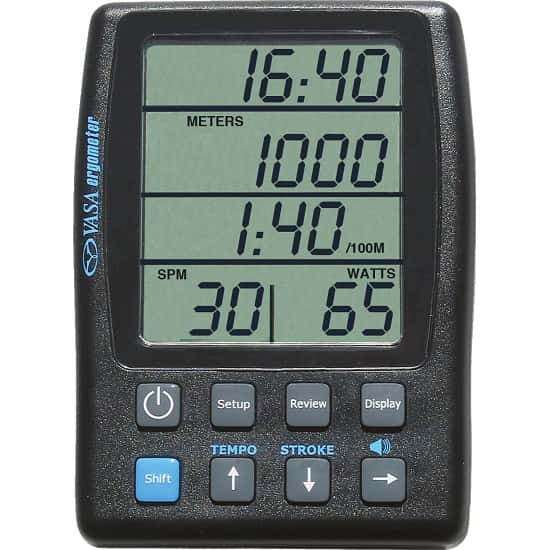
Whether you are training for flat out distance, power output (measured in watts), stroke rate, elapsed time, or doing intervals, the Power Meter gives you a wealth of training options. The motivational impact of this is hard to overstate—by giving yourself measurable targets on the swim erg you have something to work towards and proof that you are getting stronger.
The VASA trainer, or imitations of it, are on the pool deck of just about every pool that houses a high-performance swim team. Clubs including the University of Southern California, Mission Viejo Nadadores, NOVA Aquatics, and many more all use this swim bench.
We had a couple on hand when I lived in Vancouver and trained at UBC (which now houses a high-performance center as well), and the local teams and high-performance center in Victoria has them as well.
Olympic backstroke champion and former world record holder Lenny Krayzelburg loves it for giving swimmers power and range of motion at the same time:
You get strength training as well as stretching, and I think that’s extremely crucial, especially when you swim long course meters. It’s important to have long, lean muscles and I think VASA really allows you to do that.
Matt Kredich, head coach of the University of Tennessee has used the VASA machines for over two decades. He’s found that there are significant increases “in the specific strength of the swimmers’ pull.”
Additionally, Kredich notes that technique improves with use as the athlete generates a better understanding of proper stroke mechanics.
Stretch cordz or resistance bands are as familiar to pool decks as pull buoys and kickboards. They are versatile and can be used for mobility and strengthening (internal and external shoulder rotations are popular)
If the general movement is the same why shell out extra cashola for a VASA trainer compared to a set of cheap rubber cords? I’ve owned both over the years and there are advantages (and disadvantages) to both.
There are two big differences between stretch cords and VASA trainers (besides cost, of course):
VASA produces a couple of different swim benches.
The first is the Trainer Pro, where the swimmer has to pull up against gravity in order to complete a rep.
This is the original design. It is priced at around $1,000 (still cheaper than most good stationary bikes or treadmills—and also far less likely to break down over time) and can be folded away when not being used.
In order to make it more difficult you increase the angle of the bench.
Where to Buy the VASA Trainer Pro:
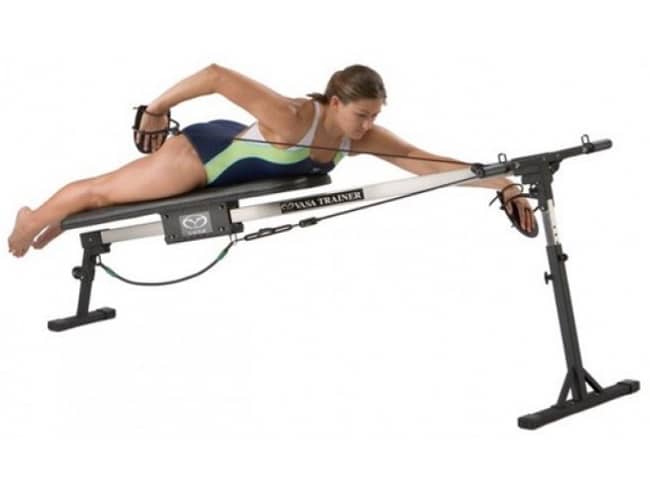
The other is the VASA SwimErg, that is like the rowing machines you see at the gym. Bulkier and more expensive (starting at around $2,000) than your regular swim bench, it gives athletes 7 different damper settings that scale difficulty.
If you are a data nerd like me this is likely the version you want—it comes with a Power Meter that pumps out details of your workout including wattage.
Where to Buy the VASA Swim Ergometer:
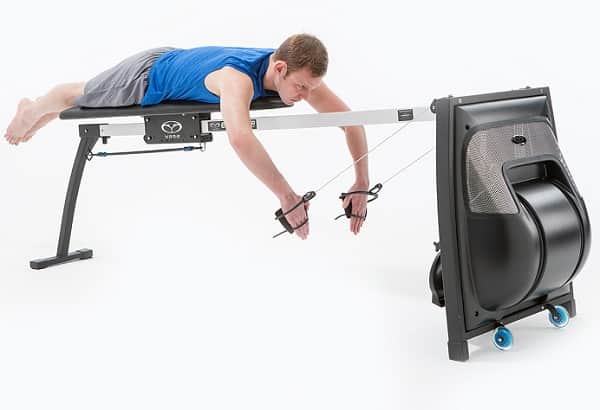
Subscribe to the YourSwimLog.com newsletter and get tips and advice on how to swim faster every weekday morning, straight to your inbox.
Join 33,000+ swimmers, coaches, and swim parents learning what it takes to swim like a boss.
Unsubscribe anytime. Email will never be shared or sold.

Olivier Poirier-Leroy Olivier Poirier-Leroy is the founder of YourSwimLog.com. He is an author, former national level swimmer, two-time Olympic Trials qualifier, and swim coach.

Ready to throw down on a new swimmer’s snorkel? Here are reviews of the best swim snorkels for lap swimming.
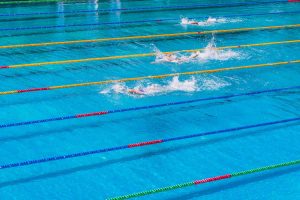
Looking to get some new swim gear on a budget? Shop the best Black Friday deals for swimmers in this exclusive guide.

Looking for the best swimming app to maximize your time and effort in the water? Here’s a look at the top swim apps for conquering your swim workouts.

Wondering how often you should be testing the water in your pool or spa? Here’s a detailed look at how frequently you should test your pool. Your swimming pool and spa relies on being properly balanced to keep the water clean and safe for swimming. As a pool owner, you
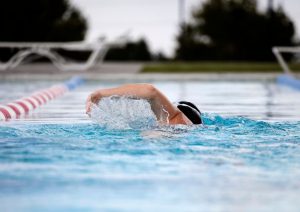
Fed up with the effects and smell of chlorine in your hair after swimming? Here is how to remove chlorine from your hair once and for all.
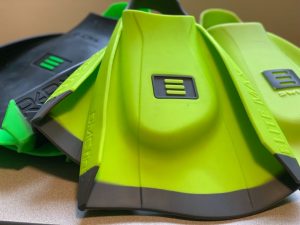
The DMC Elite fins are high-performance training fins for competitive swimmers. Here’s a review of why these fins are flat-out awesome.

LANE 6 PUBLISHING © 2012-2024 · PRIVACY POLICY · RETURN POLICY · TERMS OF SERVICE · AFFILIATE DISCLOSURE